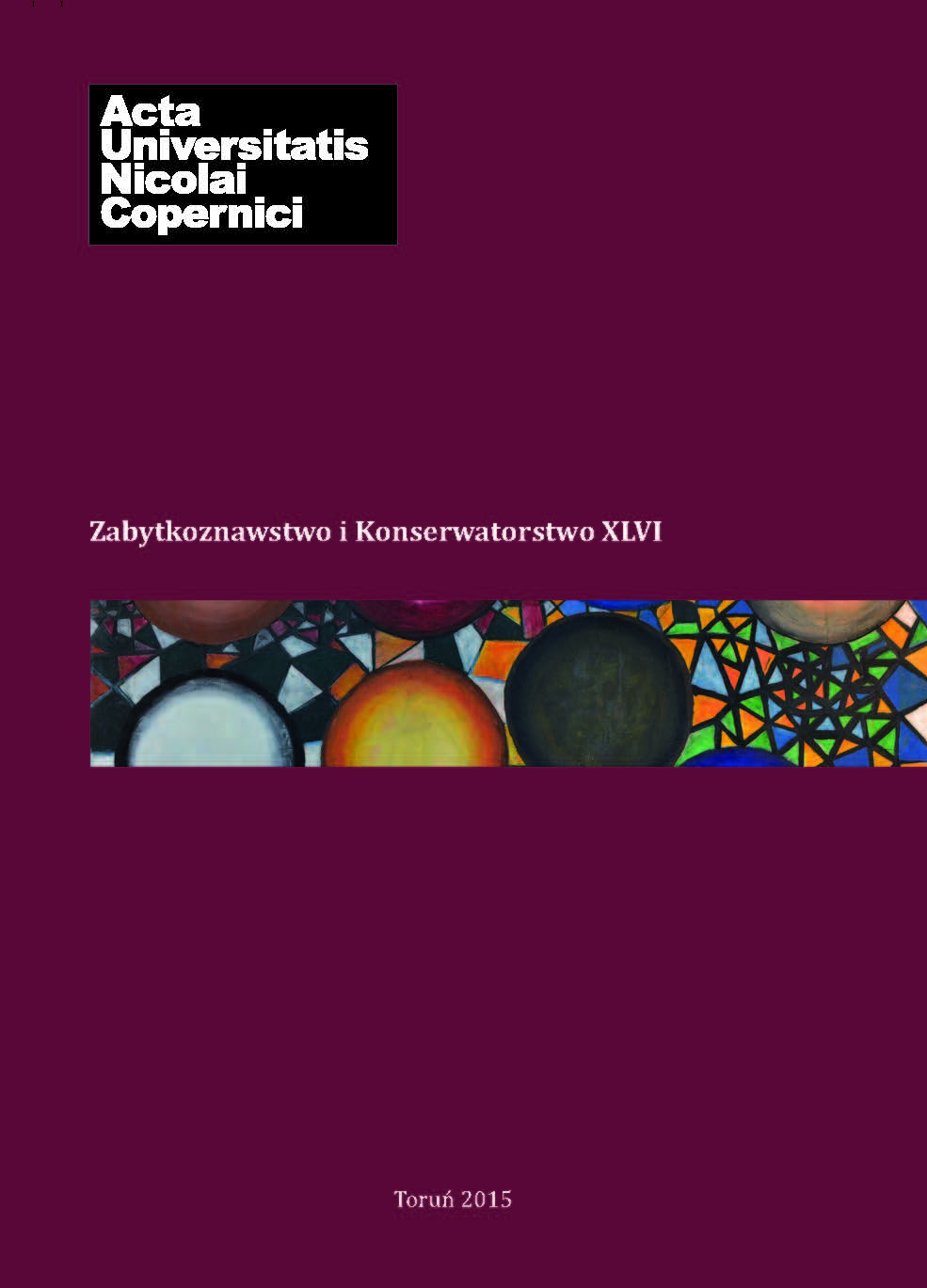Städtisches Gemäldegalerie – muzealna Miejska Galeria Malarstwa z okresu okupacji hitlerowskiej i jej historia
DOI:
https://doi.org/10.12775/AUNC_ZiK.2015.009Abstrakt
The presented facts concerning the museum’s Städtisches Gemäldegalerie during the Second World War are one of the rather willingly forgotten parts of the history of Toruń and the local museum. This period is closely connected with the Polish People’s Republic principles of centrally planned economy and disposing of the unwanted exhibits, i.e. devoid of artistic and/or historical values – because of such orders from the Ministry. Städtisches Gemäldegalerie, founded in the years 1941–1943, was almost wholly transferred by the Museum of Toruń in the years 1957–1958 (sic) – to the Central Museum Storehouse of the Ministry of Culture and National Heritage and to PPW Works of Art and Antiques Desa. The exhibits were given away without any remuneration, thus undermining and reducing the collection of exhibits of the museum. Old photographs belonging to the museum made it possible to get to know the contents and the quality of the lost exhibits. They did not attract anybody’s attention for several decades. Therefore not surprisingly, a publication commemorating the 150th anniversary of the museum (1861–2011) did not contain any mention of the Gallery, which is a serious omission. Städtisches Gemäldegalerie contained over 100 paintings (including graphics and drawings), important for the German national heritage and representing the most prominent artistic notions of the second half of the 19th and the first third of the 20th century. The works were chosen based not only on their artistic merit, but also on their ideological and propaganda message (e.g. against degenerate art). The authors of the works of art were members of the Munich School (Adolf Schreyer, Heinrich von Zügel, Friedrich Voltz, Joseph Wenglein, Friedrich August von Kaulbach), Austrian, Czech and other painters. Not only the works of Adolf Menzel, Friedrich Wasmann, Lovis Korinth, Franz von Lenbach formed parts of the collection, but also works of contemporary authors, such as Hans von Bartels, Wilhelm Busch, Albert von Keller, Moritz von Schwindt, Hans Thoma, Friedrich Wasmann, Max Slevogt, Walter Leistikow. Nowadays some of these works of art were tracked down, usually when enlisted during Polish and international auctions of art. Apart from presenting the information about the lost exhibits of the museum, the article aims at inducing some general reflection. Over the years the museum’s exhibits were repeatedly re-assessed: by the German occupants, according to the principles of socialism and finally objectively: according to the scientific, artistic and regional criteria. Enough time has passed to discuss these practices in detail – both their grounds, intentions and aims behind them and their still visible results and consequences. For they did not concern only the museum in Toruń, but those in the whole Poland and thus need to be analysed in a wider perspective.
Pobrania
Opublikowane
Jak cytować
Numer
Dział
Licencja
CC BY-ND 4.0. Posiadaczem prawa autorskiego (Licencjodawcą) jest Autor, który na mocy umowy licencyjnej udziela nieodpłatnie prawa do eksploatacji dzieła na polach wskazanych w umowie.
- Licencjodawca udziela Licencjobiorcy licencji niewyłącznej na korzystanie z Utworu/przedmiotu prawa pokrewnego w następujących polach eksploatacji: a) utrwalanie Utworu/przedmiotu prawa pokrewnego; b) reprodukowanie (zwielokrotnienie) Utworu/przedmiotu prawa pokrewnego drukiem i techniką cyfrową (e-book, audiobook); c) wprowadzania do obrotu egzemplarzy zwielokrotnionego Utworu/przedmiotu prawa pokrewnego; d) wprowadzenie Utworu/przedmiotu prawa pokrewnego do pamięci komputera; e) rozpowszechnianie utworu w wersji elektronicznej w formule open access na licencji Creative Commons (CC BY-ND 4.0) poprzez platformę cyfrową Wydawnictwa Naukowego UMK oraz repozytorium UMK.
- Korzystanie przez Licencjobiorcę z utrwalonego Utworu ww. polach nie jest ograniczone czasowo ilościowo i terytorialnie.
- Licencjodawca udziela Licencjobiorcy licencji do Utworu/przedmiotu prawa pokrewnego nieodpłatnie na czas nieokreślony
PEŁEN TEKST UMOWY LICENCYJNEJ >>
Statystyki
Liczba wyświetleń i pobrań: 1234
Liczba cytowań: 0



